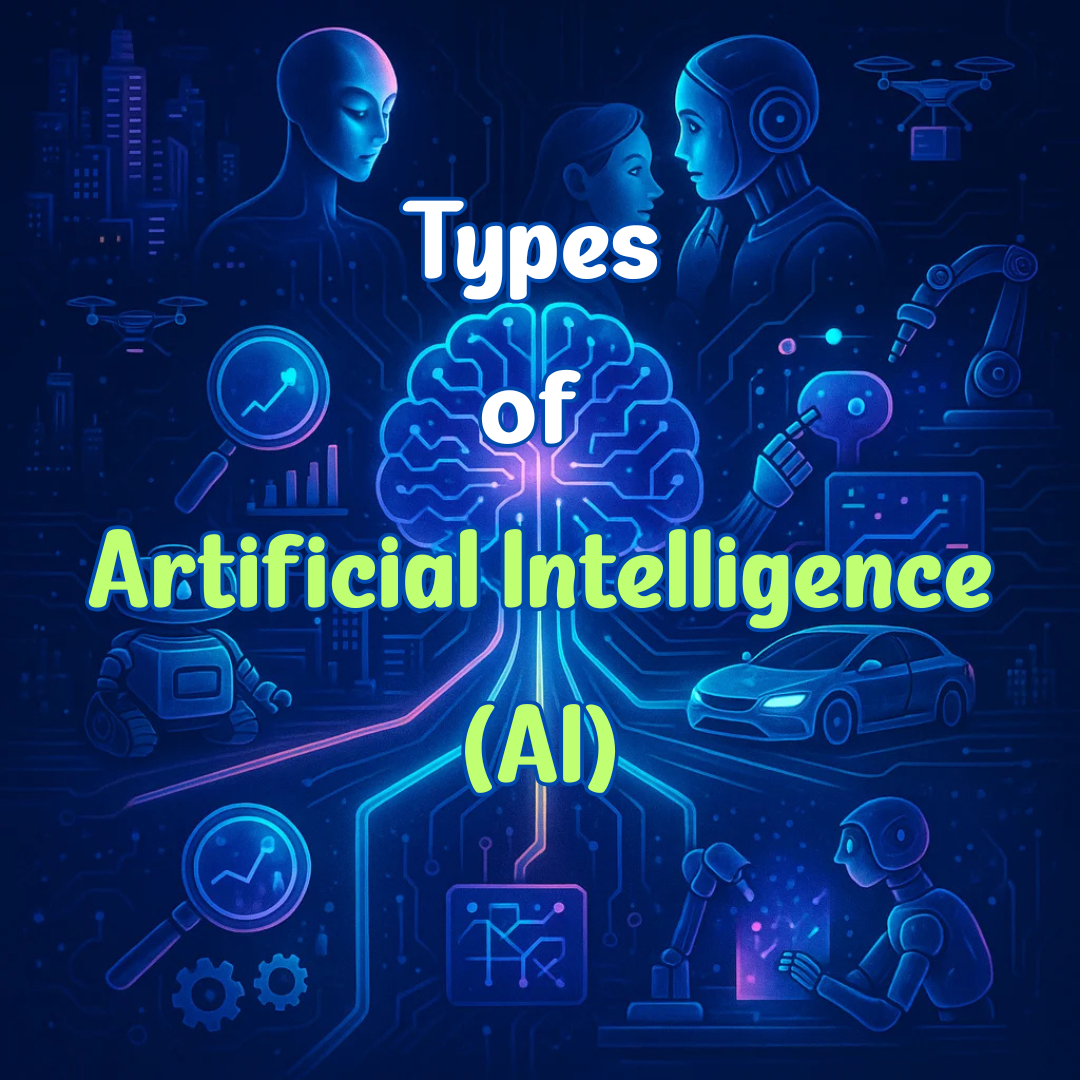Artificial Intelligence (AI) might sound like something out of a science fiction movie, but it’s already transforming how we shop, work, and even relax. Whether it’s your smartphone’s voice assistant or those eerily accurate streaming recommendations, AI is behind the scenes making things smarter and more personalised.
But did you know there are different “types” of AI — each with its own specialities and capabilities? In this guide, we’ll explore the various categories of AI, what makes them unique, and how they’re used in everyday life. Whether you’re a tech newbie or a curious professional, you’ll walk away with clarity on what’s powering today’s smartest machines.
Categories Based on Function
AI can be sorted by what it does — from analysing data to generating creative content. Let’s take a closer look at these functional types of AI.
Diagnostic (or Descriptive) AI
What does it do? This AI looks at past data to explain what happened and why it happened.
- Used in business intelligence tools for spotting trends and patterns
- Helps in root cause analysis and scenario planning
- Tools like Microsoft Power BI and Tableau use this form of AI to turn data into insights
Ever wonder how companies know their best-selling product each quarter? That’s diagnostic AI working behind the scenes.
Predictive AI
What can it predict? This AI uses both current and historical data to forecast what might happen next.
- Used in market trend analysis and customer behaviour prediction
- Great for credit risk scoring or even predicting equipment failures
- Recommendation engines like those on Amazon or Netflix heavily rely on predictive AI
Think of it like a digital fortune teller — one that runs on math instead of magic.
Prescriptive AI
Which action should we take? That’s a question prescriptive AI can help answer. It doesn’t just analyse and forecast — it recommends or automates the best path forward.
- Used in fraud detection systems
- Improves user experience with personalised content
- Powers dynamic pricing, such as how Uber adjusts fares in real time
It’s like having an intelligent advisor who not only tells you what could happen, but also what you should do about it.
Generative (or Cognitive) AI
What’s so creative about AI? Generative AI goes a step further — it creates! From writing and designing to coding and image generation, this AI mimics human creativity.
- Used for generating blog content, social media posts, or photo-realistic images
- Tools like ChatGPT, DALL·E, and GitHub Copilot are popular examples
- Also useful in generating marketing campaigns or troubleshooting code
Have you ever seen a painting created entirely by AI? That’s generative AI showing off its creative side.
Categories Based on Structure
Beyond functionality, AI can also be classified based on how it’s structured, or how “aware” it’s of its surroundings and experiences.
Reactive AI
- Only responds to specific inputs with pre-programmed replies
- Doesn’t remember anything or learn from previous interactions
- Used in basic chatbots and early game-playing systems like IBM’s Deep Blue
It’s a bit like a vending machine — input A, and you get result B. Useful, but very limited.
Limited Memory AI
- Can use past data to improve decisions
- Examples include speech recognition systems and self-driving cars
- Most current AI models fall into this category
If reactive AI is a vending machine, limited memory AI is more like a smart assistant—it learns from experience to help you better over time.
Theory of Mind AI
- Still a work-in-progress
- Aims to understand emotions, beliefs, and intentions
- Could revolutionise human-AI interaction in the future
Imagine a robot that not only hears your words but understands your tone and body language, too. That’s where this AI is headed — though we’re not there quite yet.
Self-Aware AI
- Totally theoretical — for now
- Would be fully conscious and capable of self-reflection
- The stuff science fiction dreams are made of
Someday, machines may be fully self-aware. But today, that’s still firmly in the realm of “what if?”
Narrow vs. General AI
AI’s scope also plays a role in its definition. Here’s how it’s broken down:
Narrow AI (Also Called Weak AI)
- Designed to do one specific task extremely well
- Examples include smart speakers, language translation tools, and facial recognition
- Most of today’s AI applications fall into this category
If you’ve ever used Siri or Alexa to set a reminder or play a song, you’ve interacted with Narrow AI.
General AI (Also Called Strong AI)
- Would think, reason, and learn like a human
- Could apply knowledge across multiple domains without being reprogrammed
- Still in the research and imagination stage
When will we reach general AI? Nobody knows for sure, but scientists and developers are hard at work trying to get us there.
What’s New in the AI World?
AI technology evolves fast. Here are a few trends shaking things up:
- Multimodal AI: Tools like OpenAI’s GPT-4o or Google’s Gemini can understand and generate text, images, and even audio — all at once!
- Responsible AI: Developers are prioritising fairness and accountability, especially in systems that impact things like hiring or finance.
- Smart Automation: Businesses are using AI to automate workflows, reduce errors, and speed up decision-making, from HR to supply chain.
AI Types at a Glance
| Type | Core Function | Example Use Case |
|---|---|---|
| Diagnostic/Descriptive | Data analysis and insight | Business reporting, root cause analysis |
| Predictive | Foresight from data | Forecasting sales, risk scoring |
| Prescriptive | Recommendations and automation | Fraud detection, dynamic pricing |
| Generative/Cognitive | Content and solution creation | AI writing, image generation |
| Reactive | Rule-based responses | Basic chatbots, game-playing AI |
| Limited Memory | Learns from historical data | Autonomous vehicles, voice assistants |
| Theory of Mind | Understands human emotions/intent | Emotion-aware robots (in research) |
| Self-Aware | Machine self-consciousness | (Not yet in existence) |
| Narrow AI (Weak AI) | Task-specific intelligence | Facial recognition, spam filters |
| General AI (Strong AI) | Human-level, cross-domain thinking | (Not yet in existence) |
Final Thoughts
From basic automation to mind-blowing content creation, AI comes in many forms, each with its own unique talents. As the technology continues to evolve, the possibilities are endless. Understanding the different kinds of AI helps you make smarter decisions about how to use them in your life, work, or business.
Curious which type of AI could help solve your biggest challenges? Share your goals, and let’s explore the best solutions together!




